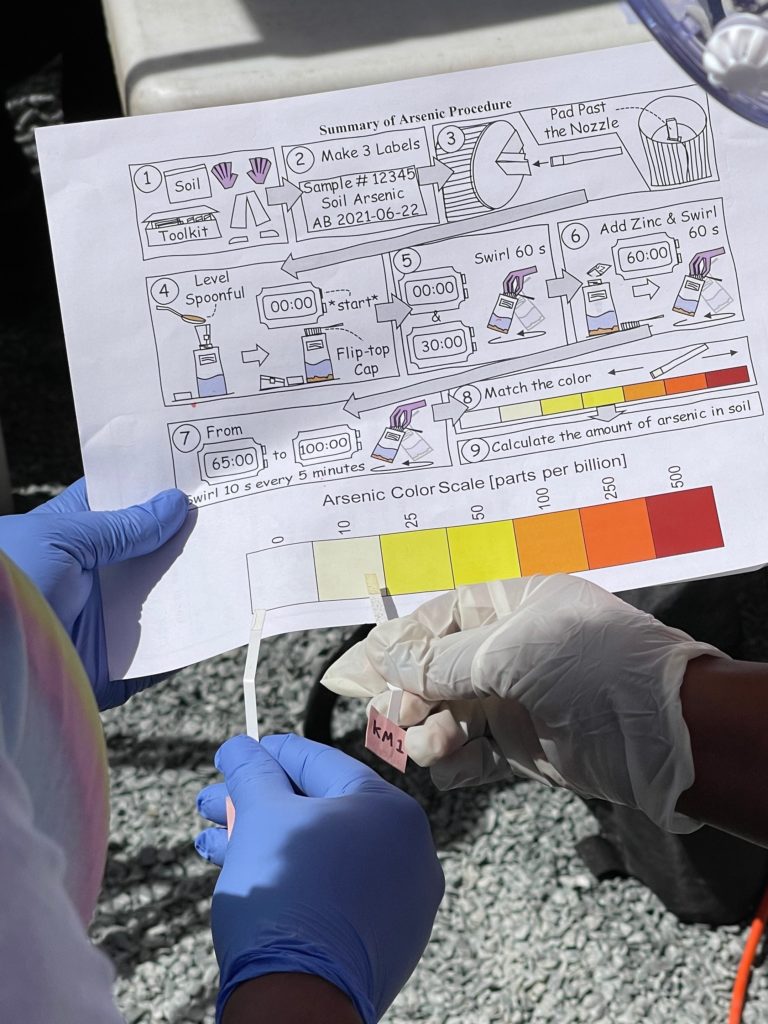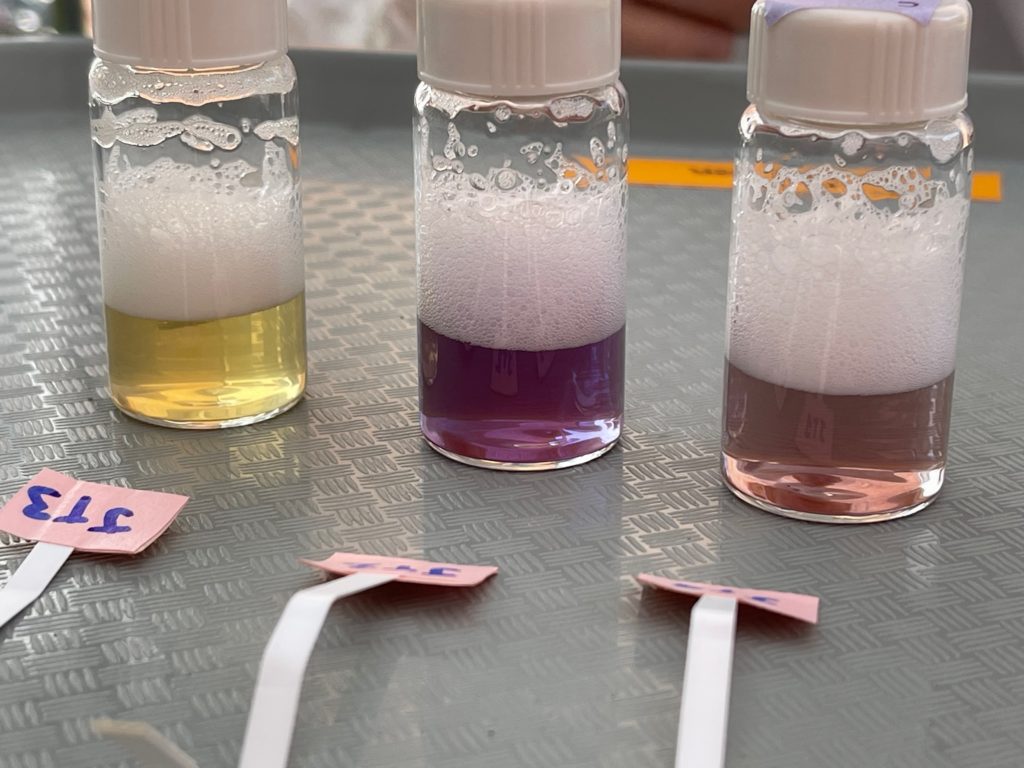Test kits
There are several methods of testing soil for heavy metals like lead. Our objective is to make soil testing more affordable and accessible by developing low-cost test kits that community groups can assemble and anyone can learn to use.
Our soil tests for lead and arsenic can be performed outside of a laboratory and provide an estimated qualitative, nonspecific bioaccessible range. Bioaccessible (or bioavailable) means “available for your body to absorb.” Based on the color observed in each test, the amounts of bioaccessible lead and arsenic in the soil can be estimated:
- For the lead test, soils can be ranked as containing low (0-150 ppm), medium (150-300 ppm), high (300-500 ppm), and very high (500+ ppm) amounts of lead.
- For the arsenic test, still under development, soils can be ranked as containing low (0-10 ppm), medium (10-50 ppm), high (50-300 ppm), and very high (300+ ppm) amounts of arsenic.
With both tests, color rankings of “medium” and higher are likely indicators that contaminants are from industrial sources, rather than naturally occurring.

In the arsenic test, the color of the pad on the test strip gives an approximation of how much bioavailable arsenic was in the soil sample.

In the lead test, the color of the liquid gives an approximation of how much lead was in the soil sample.
The color based-tests are designed to detect the bioaccessible amount of lead and arsenic, not the total amount. That said, as a starting point, these color-based test results can be loosely compared to the soil screening levels set by the U.S. Environmental Protection Agency (EPA) for lead and arsenic. The EPA’s soil screening levels are for “total” lead and arsenic (not bioaccessible) and are based on the EPA’s risk-assessment process.
Parts per million is a measure of concentration, similar to a percentage: 5 percent means 5 parts per hundred. Likewise, 5 parts per million means that for every 1,000,000 parts of soil, there are 5 parts of the substance you are measuring. While the soil screening levels for lead and arsenic may seem like low numbers, it is important to remember that even tiny amounts of lead or arsenic in the blood can cause negative health effects.
The lead test was developed by researchers at Columbia University to screen soils for lead using a color indicator that turns purple when lead is present. The intensity of the purple response corresponds to the amount of lead present. Based on the color, soils can be ranked on how much lead is present: low (0-150 ppm), medium (150-300 ppm), high (300-500 ppm), and very high (500+ ppm). The scientific paper about this test is available here.
The arsenic test is under development in the laboratory of Our Soil team member Ramírez-Andreotta. It uses a test strip that changes color corresponding to the amount of arsenic present. Based on the color, soils can also be ranked on how much arsenic is present and bioaccessible, from soils with low amounts of arsenic to the very high concentrations found in legacy mine tailings (the waste produced through the mining process). The exact ranking is under development, but is approximately “Low” (0-10 ppm), “Medium” (10-50 ppm), “High” (50-300 ppm), and “Very High” (300+ ppm).
Currently, we are making these test kits to use with our community partners in Troy and Arica. We have also developed a screening tool for copper in soil. We believe in open access to these tools. Please come back soon for instructions on how to assemble soil screening tools for lead, arsenic, and copper.